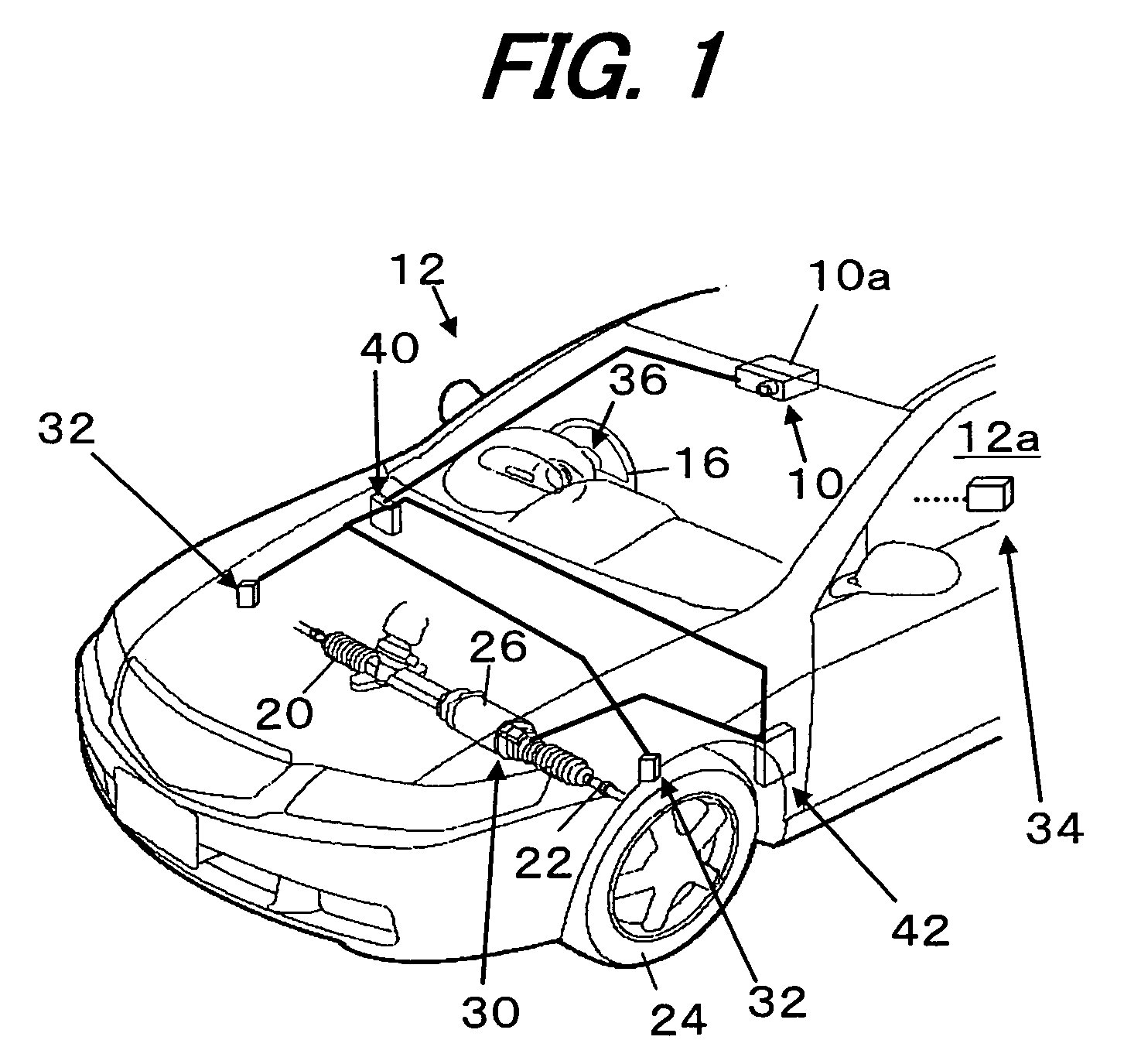Traffic lane marking line recognition system for vehicle
a recognition system and traffic lane technology, applied in the field of vehicle traffic lane marking line recognition system, can solve the problem that the recognition accuracy of white lines is not necessarily satisfactory, and achieve the effect of enhancing the recognition accuracy of traffic lane marking lines, and optimally determining the amount of apparent elongation
- Summary
- Abstract
- Description
- Claims
- Application Information
AI Technical Summary
Benefits of technology
Problems solved by technology
Method used
Image
Examples
first embodiment
[0053]FIG. 1 is a schematic drawing showing the overall configuration of a traffic lane marking line recognition system for vehicle according to an embodiment of this invention.
[0054]The symbol 10 in the drawing designates a camera equipped with an image pickup device such as a CCD, C-MOS or the like and mounted inside a passenger compartment 12a to face in the direction of travel of a vehicle 12, which camera 10 photographs a range including the road surface in the direction of travel of the vehicle 12. An image processing ECU (Electronic Control Unit) is accommodated in a case 10a of the camera 10. The image processing ECU inputs images (pictures) outputted from the camera 10 representing information on the lane forward of the vehicle and is equipped with a hardware-implemented image processing IC (Integrated Circuit) that performs image processing explained later. The camera 10 and the image processing ECU correspond to the aforesaid image photographing means.
[0055]Note that in t...
PUM
 Login to View More
Login to View More Abstract
Description
Claims
Application Information
 Login to View More
Login to View More - R&D
- Intellectual Property
- Life Sciences
- Materials
- Tech Scout
- Unparalleled Data Quality
- Higher Quality Content
- 60% Fewer Hallucinations
Browse by: Latest US Patents, China's latest patents, Technical Efficacy Thesaurus, Application Domain, Technology Topic, Popular Technical Reports.
© 2025 PatSnap. All rights reserved.Legal|Privacy policy|Modern Slavery Act Transparency Statement|Sitemap|About US| Contact US: help@patsnap.com



